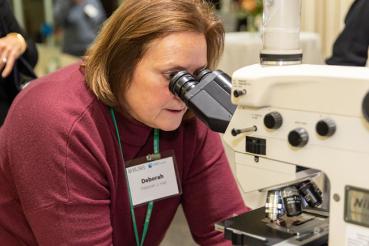Do your heels hurt first thing in the morning? Does the pain subside after a few minutes, only to resurface when you rest and get up again?
You might be experiencing plantar fasciitis, a common and frustrating injury that often afflicts runners and other active adults, leading to pain in the heel and sole of one or both feet.
The plantar fascia is a thick band of tissue that connects your heel to your toes, creating the arch. If it becomes inflamed due to strain or overuse, running and even walking can be uncomfortable.
An ounce of prevention
Simon Lee, MD, an orthopedic surgeon at RUSH who specializes in foot and ankle disorders, compares the plantar fascia to the string on a bow and arrow.
The key to avoiding plantar fasciitis and other foot pain, he says, is often as simple as stretching.
"You can't just focus on the heel as being the root of the problem," he says, noting that people with plantar fasciitis often have tight hamstrings and Achilles tendons.
"If you think of the back, hamstring, Achilles and plantar fascia as a chain, your weak link's always going to be down at the heel."
It's also important to avoid running or walking in worn-out shoes, which can cause or exacerbate foot problems. Experts recommend getting new running shoes after 300 to 500 miles.
If you think of the back, hamstring, Achilles and plantar fascia as a chain, your weak link’s always going to be down at the heel.
"Even though shoes may look OK, they're actually running out of cushion and shock absorption," Lee says.
It's also important to wear shoes with proper arch support when you're not exercising. Going barefoot or wearing flimsy flip-flops won't give you the support you need.
Relief for plantar fasciitis
Treatment options may include the following:
- Physical therapy with stretching of the calves and the plantar fascia
- Ice, applied three or four times a day to reduce inflammation
- Anti-inflammatory medications
- Gel shoe inserts
- Night splints, which stretch the plantar fascia while you're sleeping
- Cortisone injections, which can help reduce inflammation and pain
Also crucial: lots of rest, and plenty of patience. It may take anywhere from three to 12 months for plantar fasciitis to heal completely, though treatment often improves symptoms dramatically within about six weeks.
"When I see people for the first appointment," Lee says, "I tell them it will take a while to get better."




